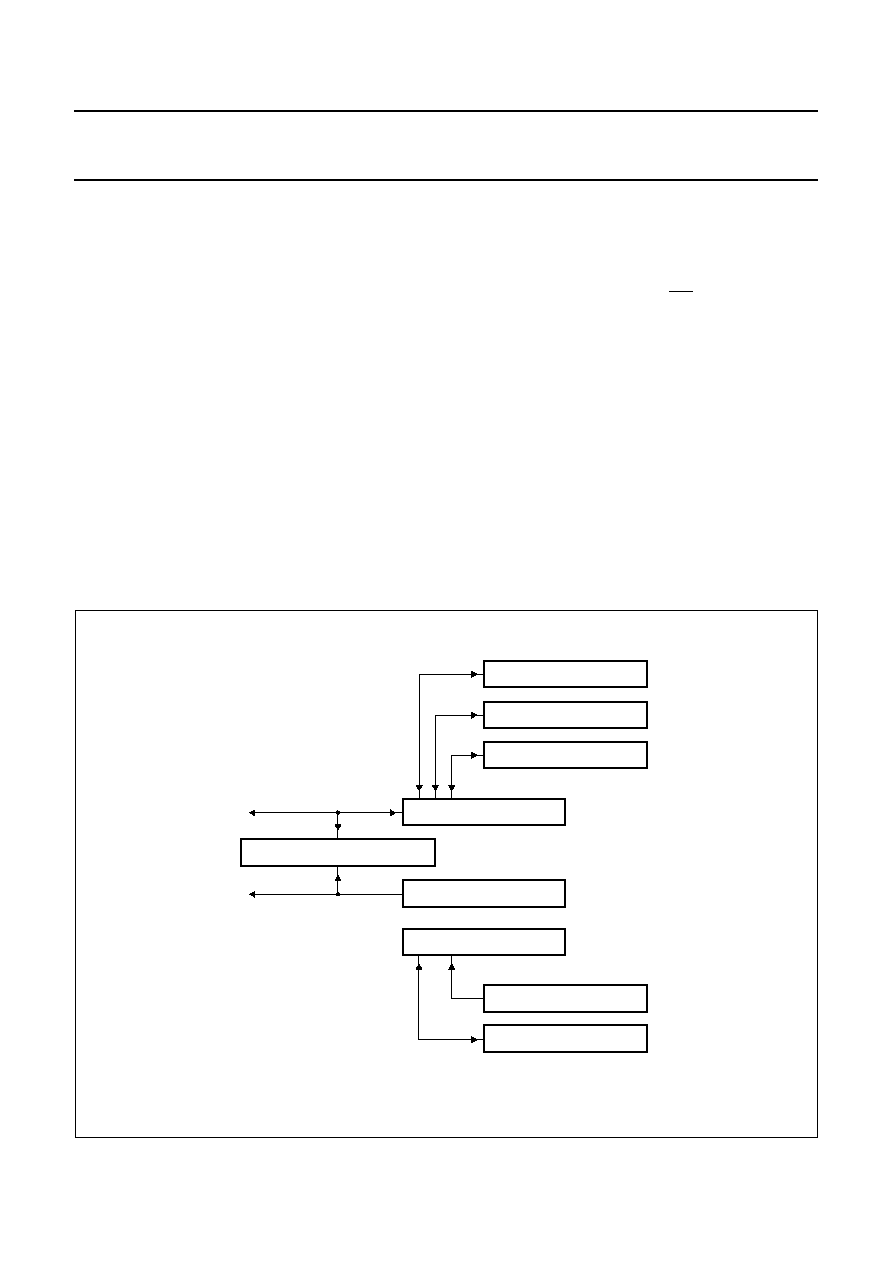- 您現(xiàn)在的位置:買賣IC網(wǎng) > PDF目錄36334 > 935260698557 (NXP SEMICONDUCTORS) SPECIALTY CONSUMER CIRCUIT, PQFP160 PDF資料下載
參數(shù)資料
| 型號: | 935260698557 |
| 廠商: | NXP SEMICONDUCTORS |
| 元件分類: | 消費家電 |
| 英文描述: | SPECIALTY CONSUMER CIRCUIT, PQFP160 |
| 封裝: | PLASTIC, SOT-322, QFP-160 |
| 文件頁數(shù): | 27/148頁 |
| 文件大小: | 692K |
| 代理商: | 935260698557 |
第1頁第2頁第3頁第4頁第5頁第6頁第7頁第8頁第9頁第10頁第11頁第12頁第13頁第14頁第15頁第16頁第17頁第18頁第19頁第20頁第21頁第22頁第23頁第24頁第25頁第26頁當前第27頁第28頁第29頁第30頁第31頁第32頁第33頁第34頁第35頁第36頁第37頁第38頁第39頁第40頁第41頁第42頁第43頁第44頁第45頁第46頁第47頁第48頁第49頁第50頁第51頁第52頁第53頁第54頁第55頁第56頁第57頁第58頁第59頁第60頁第61頁第62頁第63頁第64頁第65頁第66頁第67頁第68頁第69頁第70頁第71頁第72頁第73頁第74頁第75頁第76頁第77頁第78頁第79頁第80頁第81頁第82頁第83頁第84頁第85頁第86頁第87頁第88頁第89頁第90頁第91頁第92頁第93頁第94頁第95頁第96頁第97頁第98頁第99頁第100頁第101頁第102頁第103頁第104頁第105頁第106頁第107頁第108頁第109頁第110頁第111頁第112頁第113頁第114頁第115頁第116頁第117頁第118頁第119頁第120頁第121頁第122頁第123頁第124頁第125頁第126頁第127頁第128頁第129頁第130頁第131頁第132頁第133頁第134頁第135頁第136頁第137頁第138頁第139頁第140頁第141頁第142頁第143頁第144頁第145頁第146頁第147頁第148頁

1998 Apr 09
122
Philips Semiconductors
Product specication
Multimedia bridge, high performance
Scaler and PCI circuit (SPCI)
SAA7146A
7.17
I2C-bus interface
7.17.1
GENERAL DESCRIPTION
The I2C-bus is a simple 2-wire bus for efficient inter-IC
data exchange. Only two bus lines are required: a serial
clock line (SCL) and a serial data line (SDA). It’s a true
multi-master bus including collision detection and
arbitration to prevent data corruption if two or more
masters simultaneously initiate data transfers. Serial clock
synchronization allows devices with different bit rates to
communicate via the same serial bus. The block diagram
is shown in Fig.42.
7.17.2
FUNCTIONAL DESCRIPTION
The I2C-bus performs byte oriented data transfers. Clock
generation and bus control arbitration are controlled by
hardware. The status register (IICSTA) reflects the status
of the interface and the I2C-bus (see Table 110).
An interrupt after execution may be enabled optionally.
The bus clock generator supports clock rates from
5 to 400 kHz.
The I2C-bus interface is programmed through the transfer
control register (IICTRF) which is shown in Table 112.
A write to this register starts the transfer sequence where
up to 3 bytes are transferred: BYTE2, BYTE1 and BYTE0.
Any of these 3 bytes may be disabled or enabled for use
(as data byte or 7-bit address plus RW bit) in three I2C-bus
protocol functions:
START: start/restart and address device
CONT: transfer data and continue
STOP: transfer data and stop.
All bus operations are done via these three functions.
The functional usage of each single byte is defined by the
byte specific attribute information (see Table 113).
Fig.42 Block diagram of I2C-bus serial interface.
handbook, full pagewidth
MGG278
BYTE 0
BYTE 1
BYTE 2
TRANSFER ATTRIBUTES
STATUS REGISTER (IICSTA)
8-BIT SHIFT REGISTER
BUS CLOCK GENERATOR
CONTROL
ARBITRATION AND SYNC LOGIC
SDA
SCL
相關(guān)PDF資料 |
PDF描述 |
|---|---|
| 935260699551 | SPECIALTY CONSUMER CIRCUIT, PQFP208 |
| 935260699557 | SPECIALTY CONSUMER CIRCUIT, PQFP208 |
| 935243450551 | COLOR SIGNAL ENCODER, PQFP44 |
| 935243450557 | COLOR SIGNAL ENCODER, PQFP44 |
| 935243460551 | COLOR SIGNAL ENCODER, PQFP44 |
相關(guān)代理商/技術(shù)參數(shù) |
參數(shù)描述 |
|---|---|
| 935261069122 | 制造商:NXP Semiconductors 功能描述:IC SECURITY TRANSPONDER PLLMC |
| 935262025112 | 制造商:NXP Semiconductors 功能描述:SUB ONLY IC |
| 935262217118 | 制造商:NXP Semiconductors 功能描述:Real Time Clock Serial 8-Pin SO T/R |
| 935264217557 | 制造商:NXP Semiconductors 功能描述:SUB ONLY IC |
| 935267356112 | 制造商:NXP Semiconductors 功能描述:IC TEA1507PN |
發(fā)布緊急采購,3分鐘左右您將得到回復。